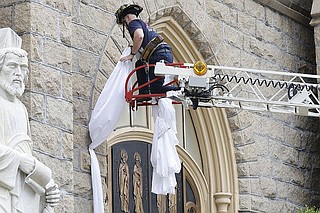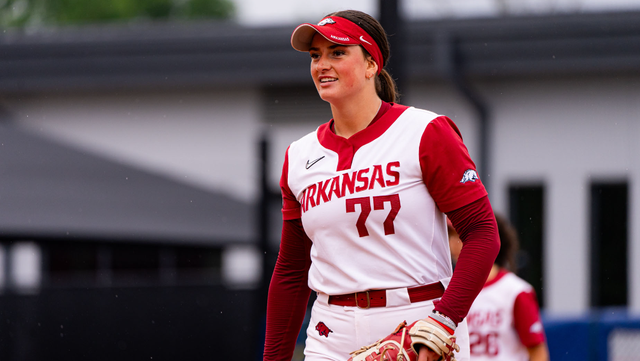Executive Summary
- Six measles cases have been confirmed in Arkansas, impacting multiple counties including Mississippi, Faulkner, Pulaski, Saline and Sebastian.
- The Arkansas Department of Health has identified numerous public exposure locations and is advising individuals to monitor for measles symptoms.
- Updated MMR vaccine recommendations have been issued, particularly for Faulkner and surrounding counties, to combat the outbreak.
Event Overview
Arkansas is currently grappling with a measles outbreak. The Arkansas Department of Health (ADH) has confirmed a total of six cases across the state. The outbreak has affected multiple counties, including Faulkner, Mississippi, Pulaski, Saline, and Sebastian. Public health officials are working to contain the spread of the disease by identifying potential exposure sites and issuing advisories. Individuals who may have been exposed are urged to monitor for symptoms, which include fever, cough, runny nose, conjunctivitis, and a characteristic rash. The ADH has also updated vaccine recommendations to encourage vaccination and prevent further spread.
Media Coverage Comparison
| Source | Key Angle / Focus | Unique Details Mentioned | Tone |
|---|---|---|---|
| kait8.com | Initial measles case in Mississippi County | Identifies Big River Steel in Osceola as an exposure location from April 25-28, 5:30 a.m. to 8:30 p.m. | Informative |
| thv11.com | Update on statewide measles cases and exposure locations | Lists exposure sites by county and date, including Faulkner, Pulaski, Saline, Sebastian and Mississippi counties. Confirms 6 cases total. | Informative |
| katv.com | New measles cases in Faulkner County and vaccine recommendations. | Details specific exposure locations in Faulkner County and highlights updated vaccine recommendations for children and adults. | Informative |
Key Details & Data Points
- What: A measles outbreak is occurring in Arkansas, with six confirmed cases across multiple counties. Public health officials are identifying exposure sites and urging people to monitor for symptoms.
- Who: The Arkansas Department of Health (ADH) is the lead agency. Key populations include individuals who visited identified exposure locations, children, and adults who are not vaccinated.
- When: The outbreak began in early April 2025. Exposure dates range from early April to early May 2025. The ADH announced the first case on April 10, 2025.
- Where: The outbreak has affected Faulkner, Mississippi, Pulaski, Saline, and Sebastian counties in Arkansas. Specific exposure locations include medical facilities, businesses, and other public spaces within these counties.
Key Statistics:
- Key statistic 1: 6 (total number of confirmed measles cases in Arkansas)
- Key statistic 2: 7-14 days (incubation period for measles symptoms)
- Key statistic 3: 28 days (minimum interval between two MMR vaccine doses for those over 12 months)
Analysis & Context
The measles outbreak in Arkansas poses a significant public health challenge. The rapid spread of the disease across multiple counties highlights the importance of vaccination and public health awareness. The ADH's efforts to identify exposure sites and issue advisories are crucial steps in containing the outbreak. However, the potential for further spread remains a concern, particularly among unvaccinated individuals and those who may have been exposed but are not yet showing symptoms. The updated vaccine recommendations are a proactive measure to bolster immunity and prevent future cases. The situation requires ongoing monitoring and coordinated efforts to ensure the outbreak is effectively managed.
Conclusion
The measles outbreak in Arkansas is an evolving situation, now with six confirmed cases and multiple potential exposure sites across several counties. The Arkansas Department of Health is working to contain the spread, emphasizing updated vaccine recommendations, especially for those in Faulkner County and surrounding areas. With evidence of community spread, vigilance and public cooperation are crucial. Vaccination remains the most effective preventive measure, with the MMR vaccine being 93% effective after one dose and 97% effective after two doses. Infants aged 6 to 11 months in high-risk areas are now eligible for an early "zero" dose of the MMR vaccine. Ongoing monitoring, adherence to public health advisories, and increased vaccination rates are essential to mitigating the outbreak's impact and preventing further cases in Arkansas, where vaccination rates are below the recommended 95% for herd immunity.
Disclaimer: This article was generated by an AI system that synthesizes information from multiple news sources. While efforts are made to ensure accuracy and objectivity, reporting nuances, potential biases, or errors from original sources may be reflected. The information presented here is for informational purposes and should be verified with primary sources, especially for critical decisions.










